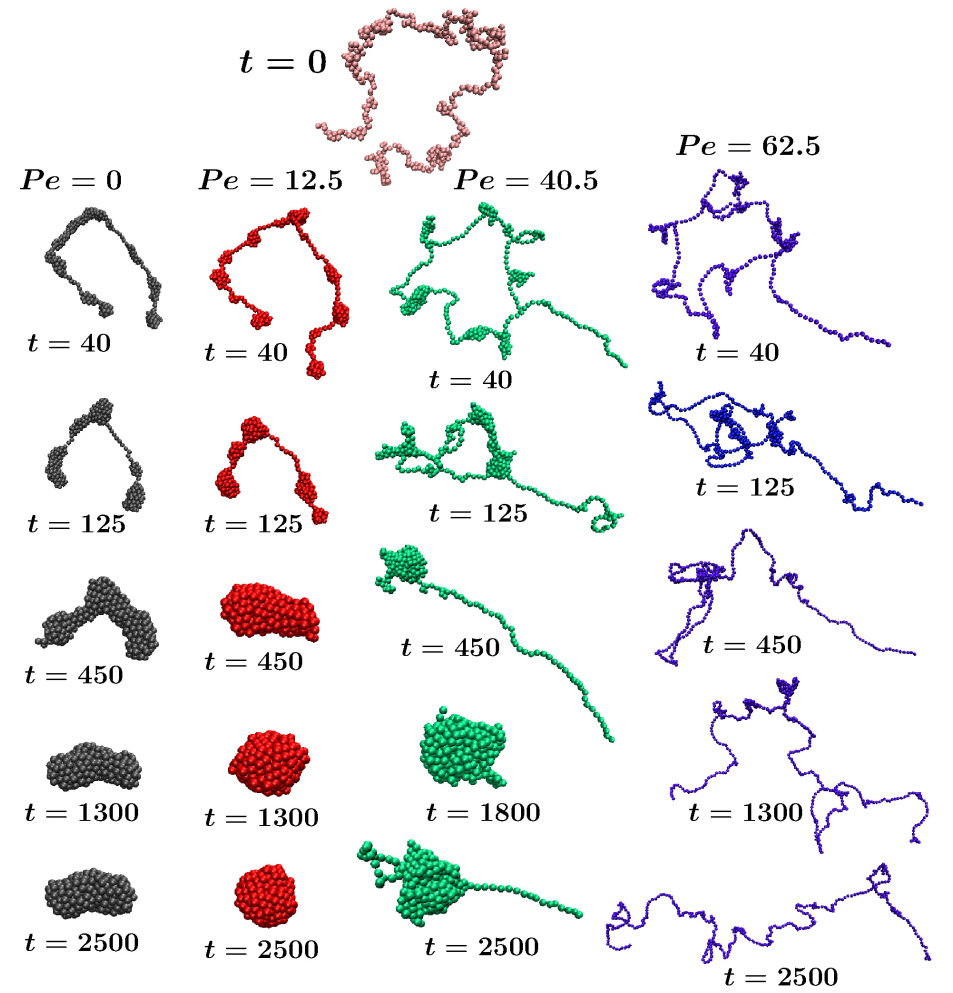Understanding the role of self-propulsion on the conformational properties of active filamentous objects has relevance in biology. In this work, we consider a flexible bead-spring active polymer model with both attractive and repulsive interactions among the non-bonded monomers. Activity for each monomer works along its intrinsic direction of self-propulsion which changes diffusively with time. We study its kinetics in the overdamped limit, following a quench from good to poor solvent condition. We observe that with low activities, though the kinetic pathways remain similar, the scaling exponent for the relaxation time of globule formation becomes smaller than that for the passive case. Interestingly, for higher activities when self-propulsion dominates over interaction energy, the polymer conformation becomes extended coil-like. In its steady state, the variation of the spatial extension of the polymer, measured via its gyration radius, shows two completely different scaling regimes: The corresponding Flory exponent changes from 1/3 to 3/5 similar to a transition of the polymer from a globular state to a self-avoiding walk. This can be explained by an interplay among three energy scales present in the system, viz., the “ballistic”, thermal, and interaction energy.
Download a copy of the manuscript (preprint version)

